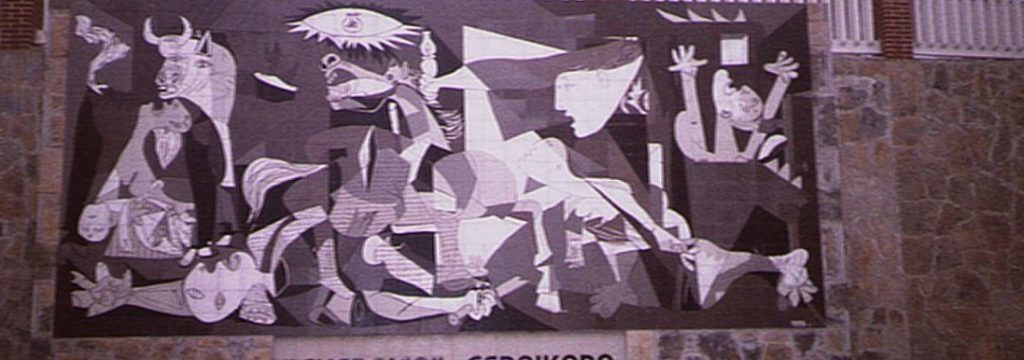The Bombing of Guernica


Considered one of Picasso’s most famous works, the painting “Guernica” details, and advocates, against the bombing practices of the fascist forces in the Spanish Civil War. His muse, the Basque town of Guernica, was the cultural capital of the Basque people, and its destruction was symbolic of the oppression that the Basque people had faced. The bombing of Guernica came as a response to a nascent form of control and a sense of betrayal that Franco felt against the Republican-leaning Basques. The Basque Nationalist forces within the region had become a powerful minority force within Spanish Parliament as a whole during the short-lived Republican era after being itself repressed during the previous dictatorship of Primo de Rivera.
This action was significant in showing the beginning of the modern Basque conflict because it signaled the death knell for the traditional form of Basque sovereignty and Basque autonomy that had continued for so long under Spanish rule. The destruction of the cultural city was symbolic of an attack on the Basque culture itself. Thousands of Basque clergy; military leaders; and other individuals would be taken into the countryside and executed for actions against the Francoist state. After the Spanish Civil War Franco’s government suppressed all dialects and languages other than Castilian Spanish, including Basque, as well as, in many regions, the culture. As a result, organizations such as the ETA would arise to combat the oppression that Francoist Spain put onto the Basque people.
Image caption: This was a tiled piece, photographed in 1997, that calls for the installation of the Guernica piece in the Basque Country. It mirrors the famous painting of “Guernica” by Pablo Picasso and is meant to be a stand-in for the real thing, which describes in artistic detail the events that transpired on the day in 1937 when Guernica was bombed to the ground by Spanish and Nazi forces. The desire for the reclamation of a piece that, in their eyes, is for Guernica as a whole is represented by this fresco. The slogan means “Guernica to Guernica” in English, stating that the piece deserves to belong to the city of Guernica.